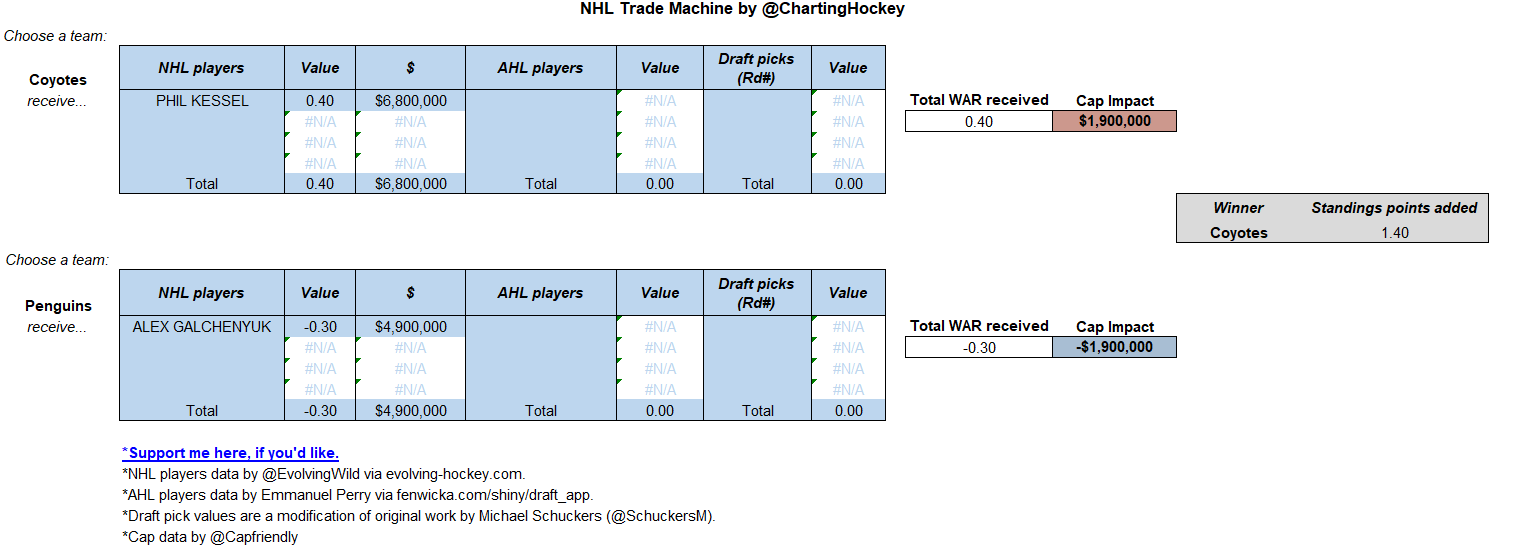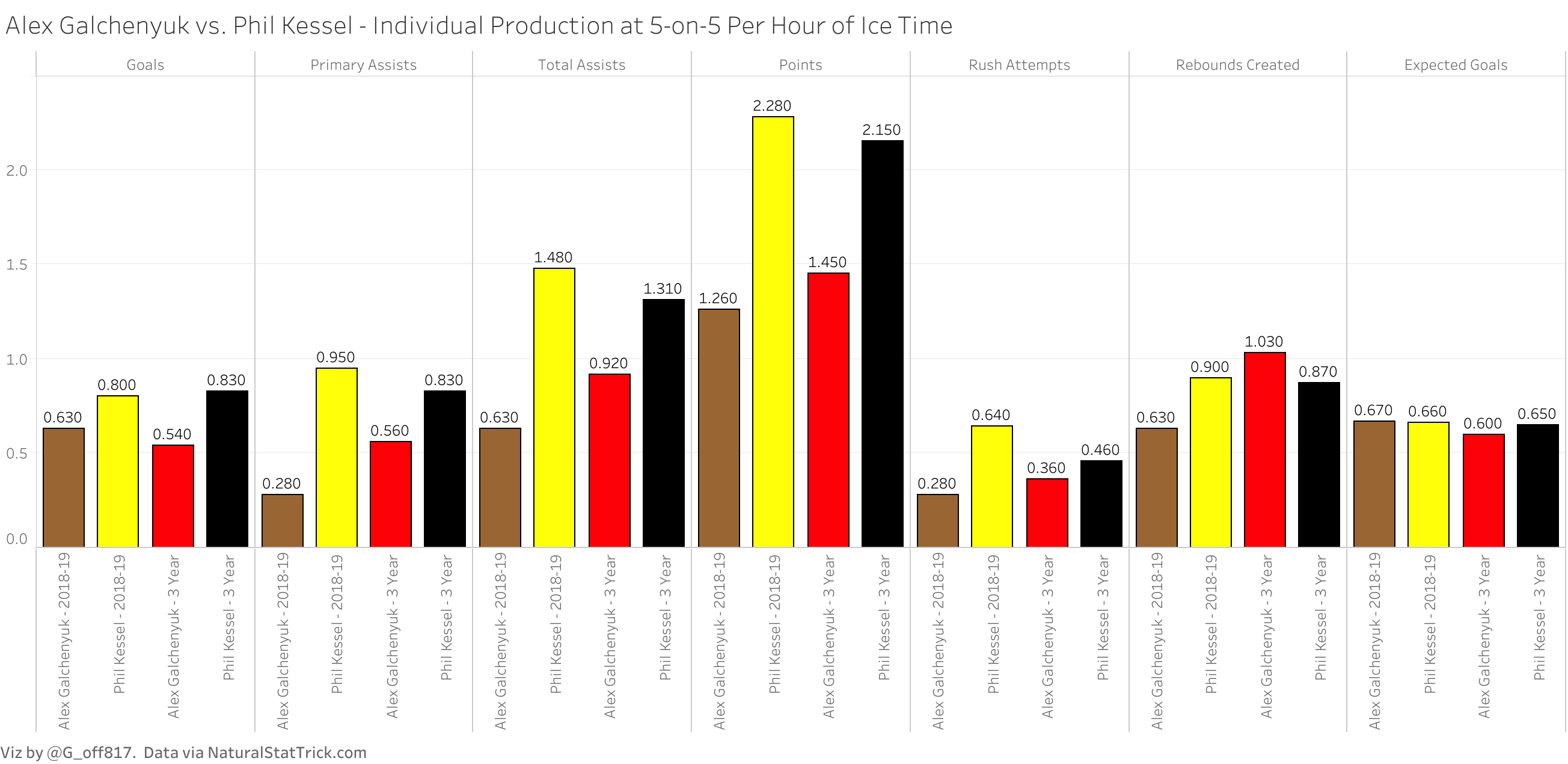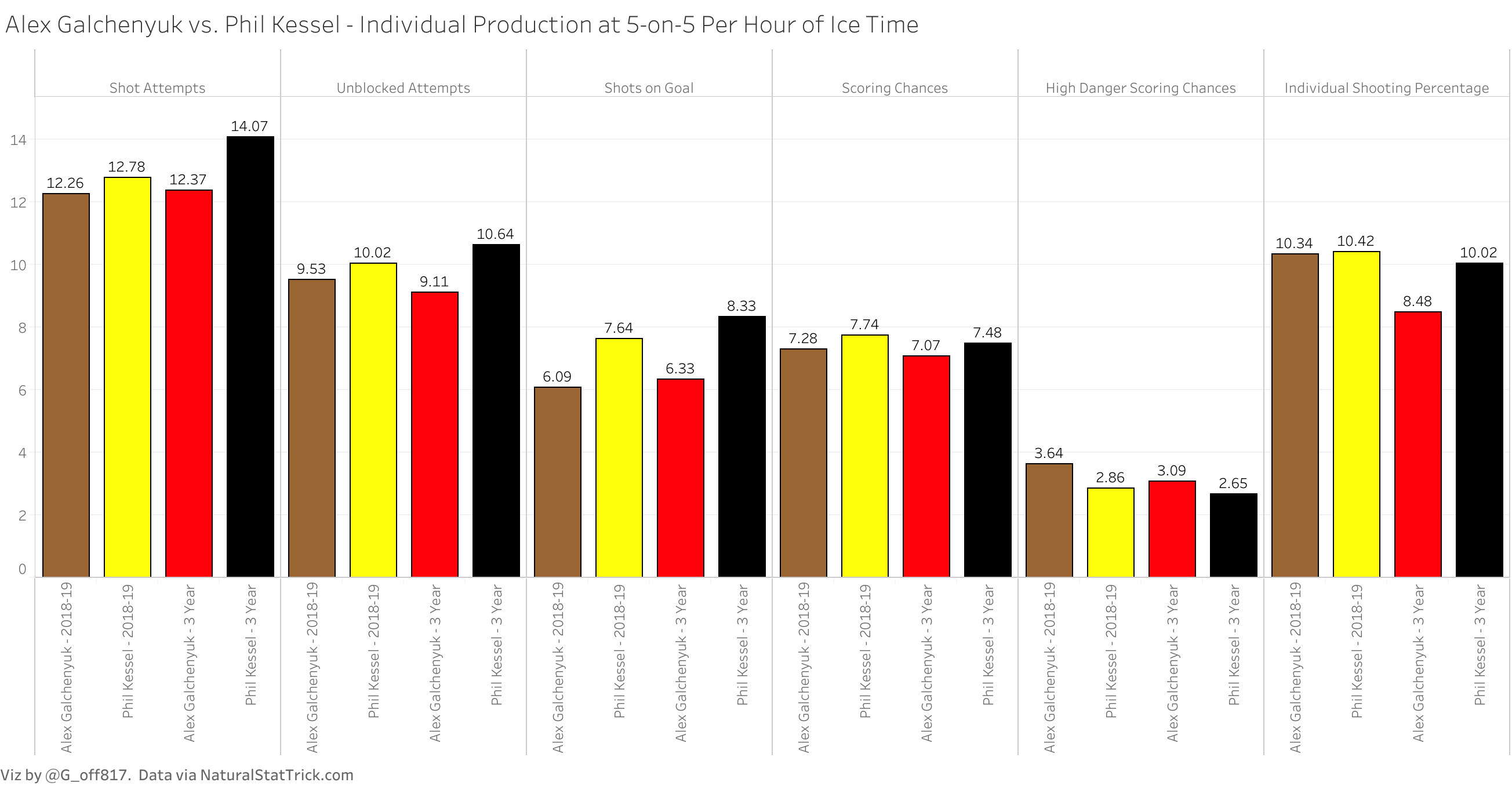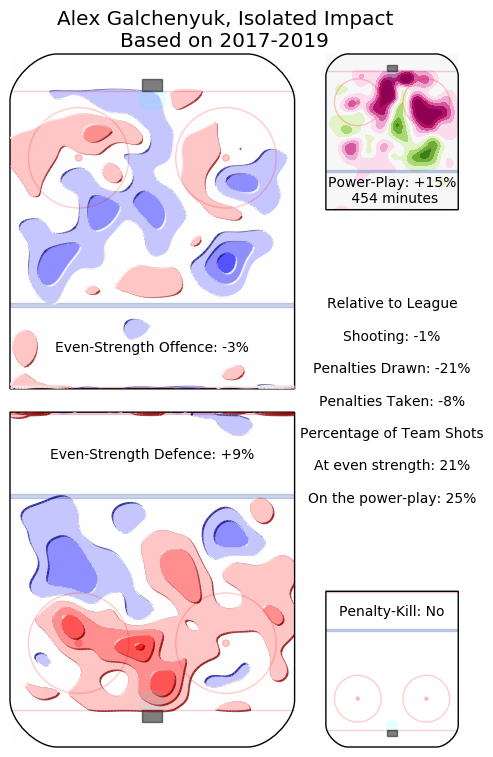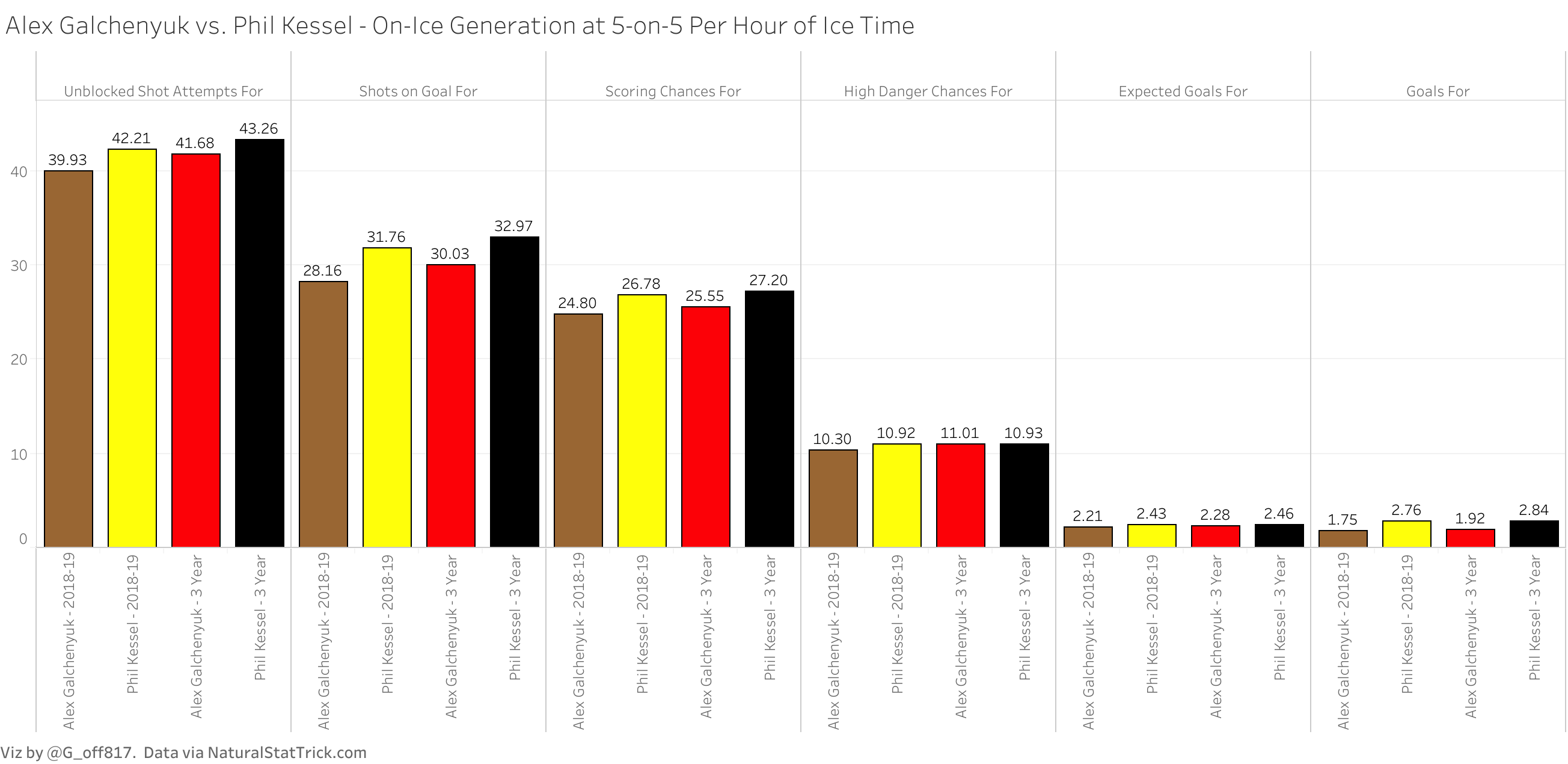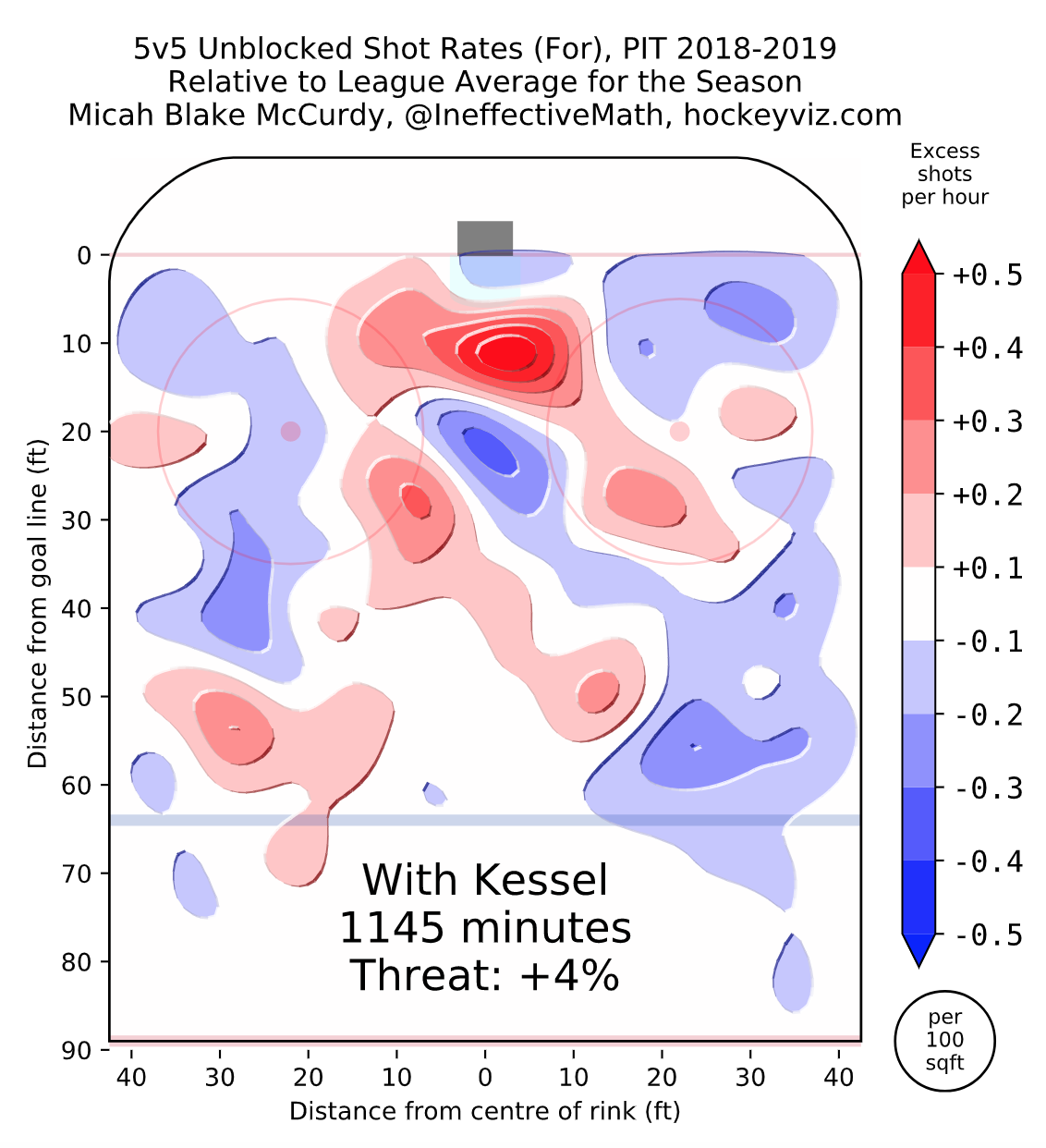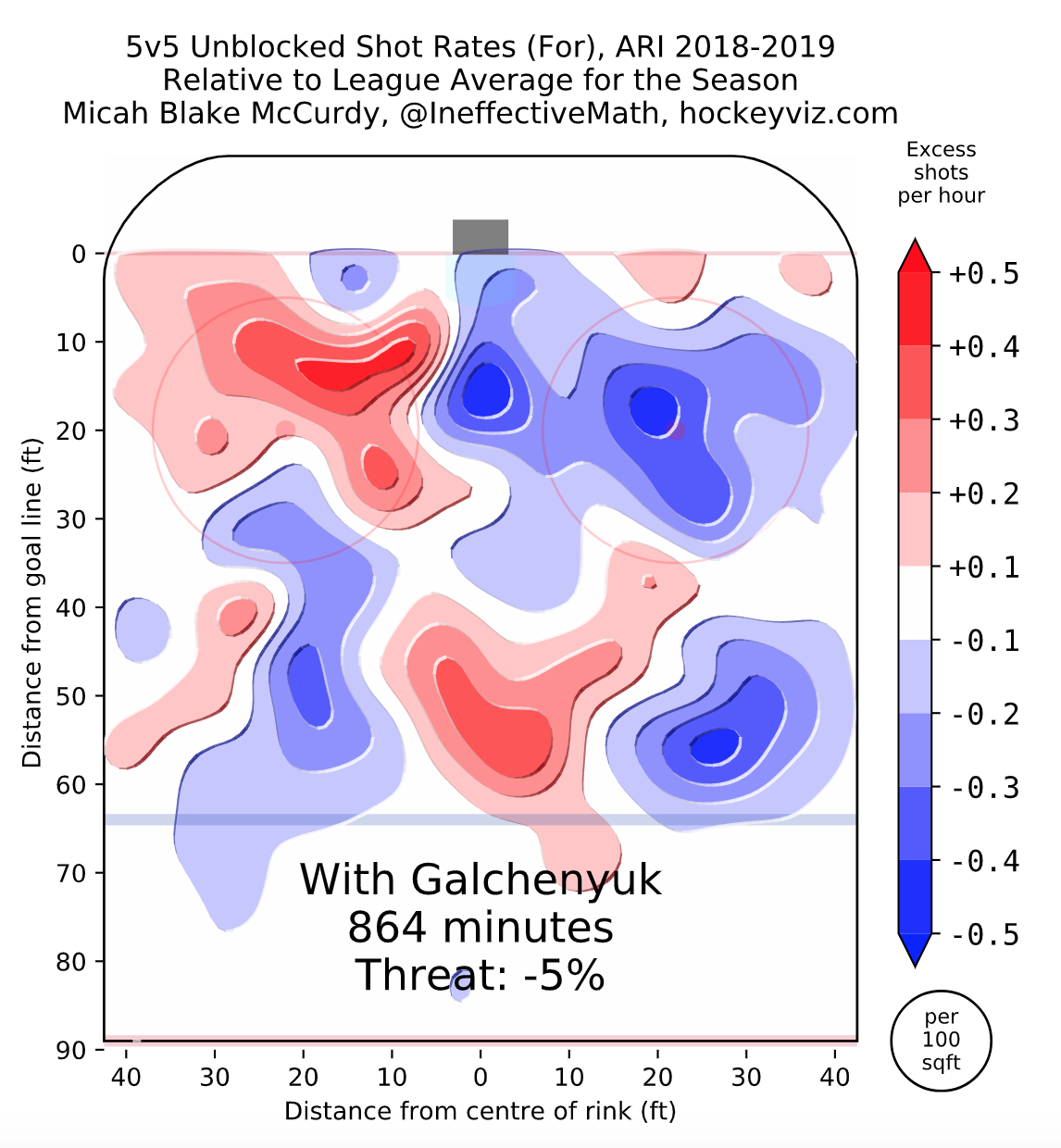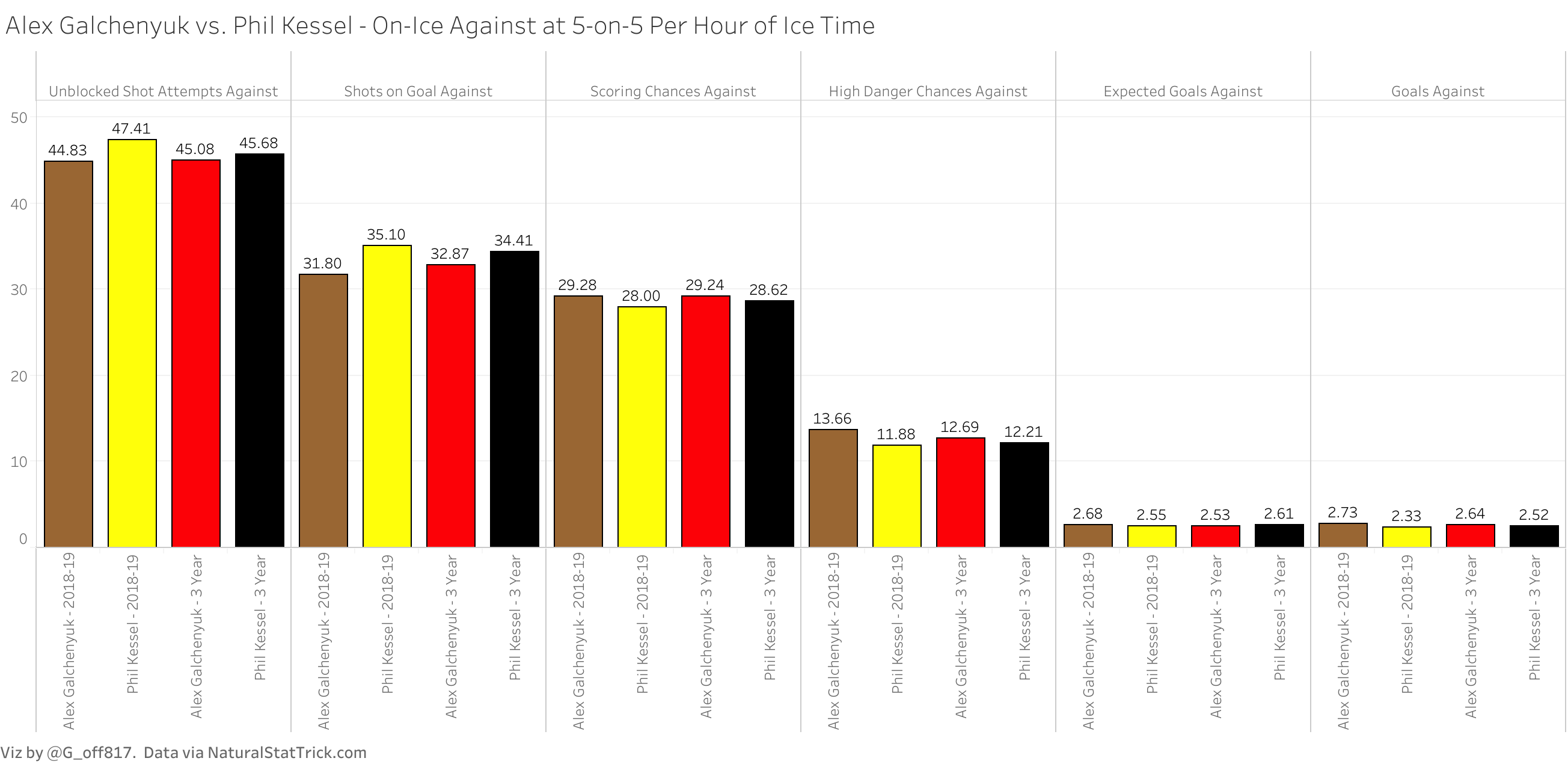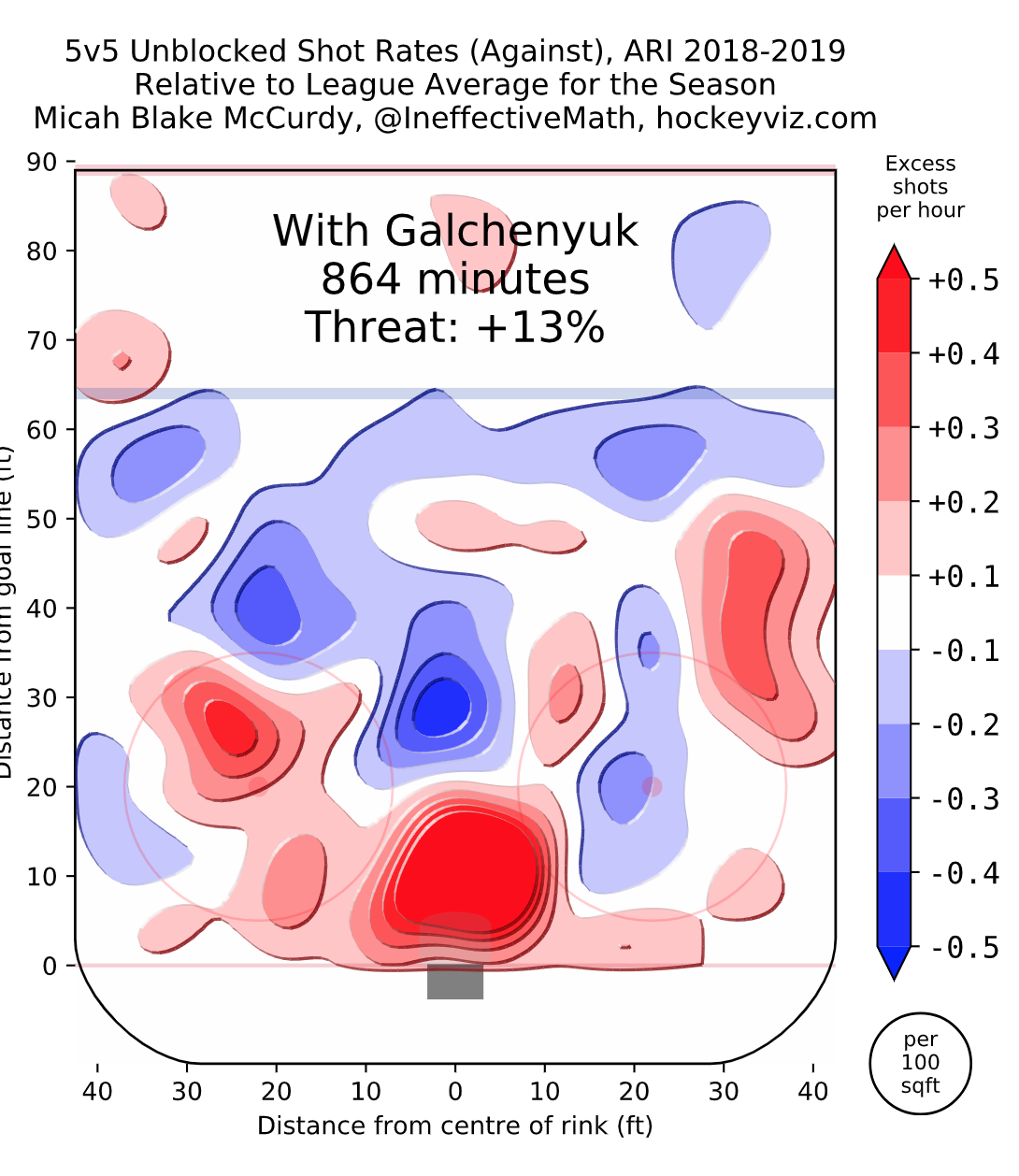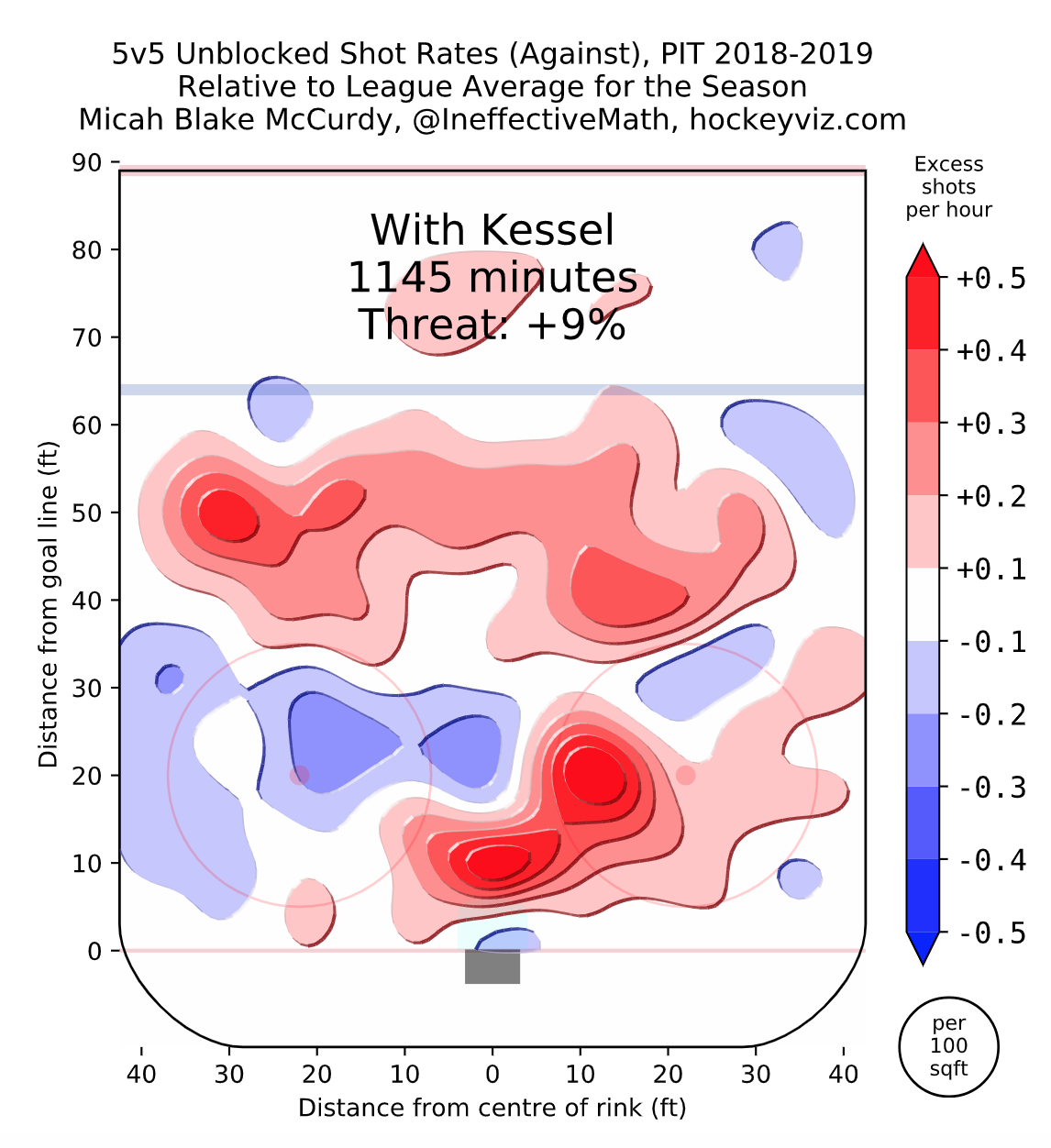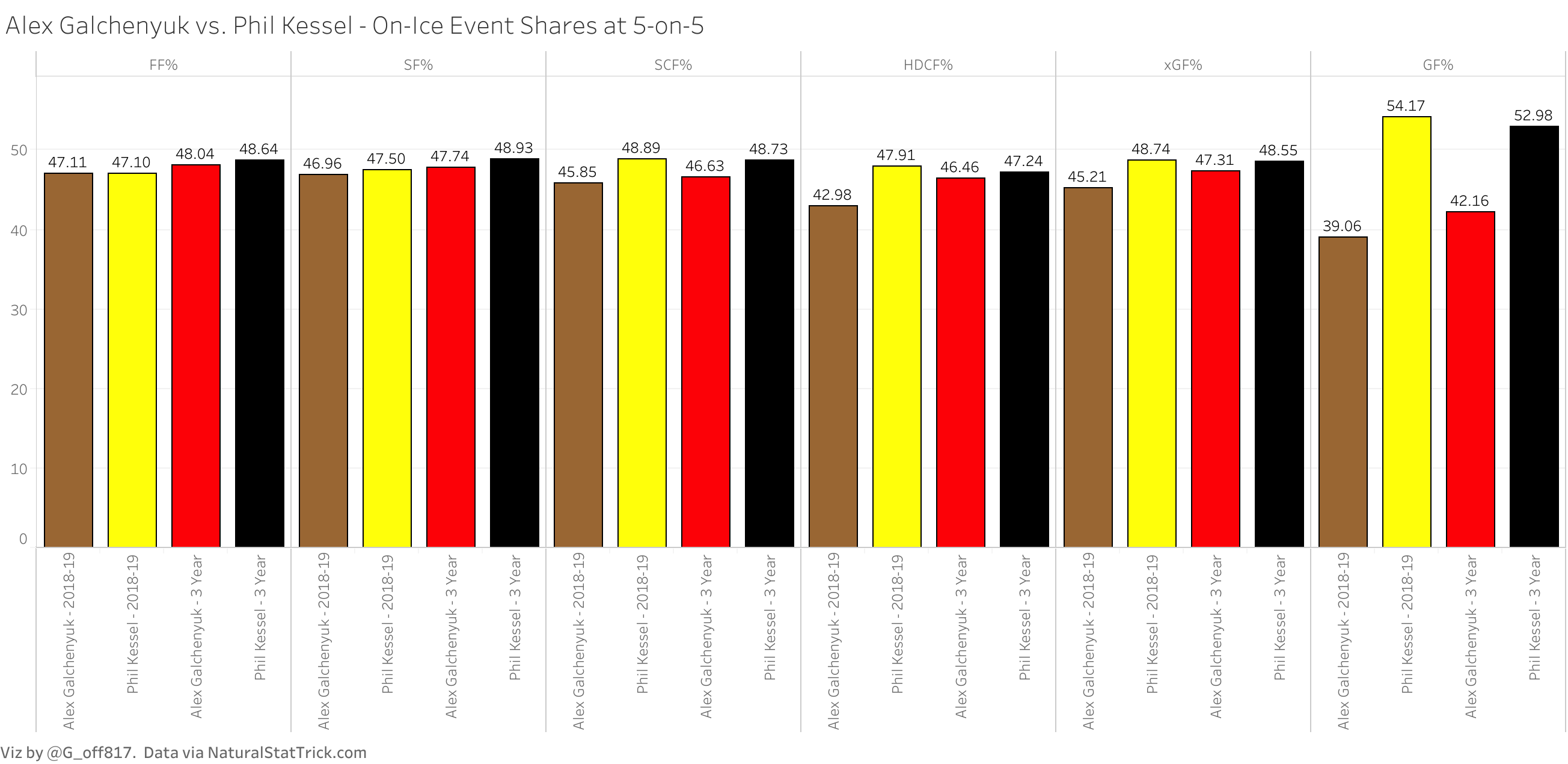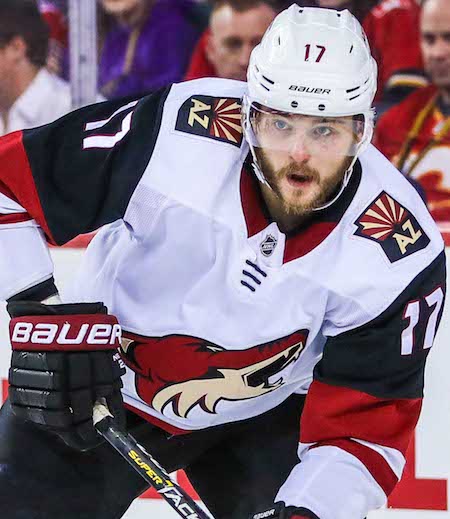
© Bildbyrån – COP 268 – SWEDEN ONLY
Last night, the drama finally came to an end.
Jim Rutherford moved on from Phil Kessel, sending him to Arizona (along with Dane Birks and a 4th round pick) in exchange for Alex Galchenyuk and a D prospect by the name of Pierre-Olivier Joseph.
Since the trade, GMJR had things to say just as he has all offseason.
The full quote pic.twitter.com/a05FJAA6j9
— Jonathan Bombulie (@BombulieTrib) June 30, 2019
Kessel, during his conference call, immediately rebuked those claims.
The Kessel quote pic.twitter.com/GedTXxQE6c
— Jonathan Bombulie (@BombulieTrib) June 30, 2019
The war of words likely won’t stop there and, at some point, we’ll get the full story. But until then, let’s talk Galchenyuk.
Drafted 3rd overall by Montreal in 2012, the 25 year old Milwaukee native has come with lofty expectations following his draft year NHL debut. Since the lockout-shorted 2013 season, he’s gone on to score 50+ points just twice in his career (56 in 82 games in 2015-16, his 4th in the league and 51 in 80 games in 2017-18, his 6th in the league), while being a 30 goal scorer once (2015-16).
Following the conclusion of the 2017-18 season, he was sent to Arizona in exchange for Max Domi.
His first year in Arizona was exceedingly underwhelming, scoring 19 goals and 41 points in 72 games.
Back during #PhilKesselWeek here at The Pensblog, I had this to say about Galchenyuk as a potential return for Phil Kessel:
In this scenario, the Coyotes would add 1.40 standings points by turning Galchenyuk, a UFA after next season and the #41 ranked LW by Corsica, into Phil Kessel.
Given his age, breaking into the league the season he was drafted, two 50+ point seasons and a 30 goal season under his belt, he’s still viewed as having untapped potential. His usage in Montreal and injury history (he’s played 80 or more games just 3 out of 7 seasons, including the lockout-shortened 2013 year), have left a lot to be desired.
He’s “marginally” better than Phil defensively (+9% versus +13%) though still not particularly good, isn’t as good offensively (-3% versus +5%), but is slightly better on the powerplay (+15% versus +12%). He’s also scored 60 powerplay points across the last 3 seasons, despite having played just 215 of a possible 246 games and seeing less PP ice time.
…
[Kessel would] be an immediate upgrade over most of their current crop of wingers. This is especially true when you consider they scored the fewest amount of goals at 5v5 last season (131) and 3rd fewest at all strengths (209).That said, Galchenyuk (or any other Yote beyond Clayton Keller) wouldn’t cut it in terms of making the Penguins better…
So let’s get into those margins and see just what Galchenyuk will bring to the Penguins.
Individual production
At an extremely high level, Galchenyuk is a downgrade from Kessel from a production standpoint. Simply put: he doesn’t put up the points Kessel does whether it be over the last 3 seasons or over the course of their careers.
| 5v5 | Kessel | Galchenyuk |
| Goals – Last 3 Seasons | 47 | 24 |
| Goals Per 60 minutes – Last 3 Seasons | 0.83 | 0.54 |
| Total Assists – Last 3 Seasons | 74 | 41 |
| Totals Assists Per 60 minutes – Last 3 Seasons | 1.31 | 0.92 |
| Total Points – Last 3 Seasons | 121 | 65 |
| Total Points Per 60 minutes – Last 3 Seasons | 2.15 | 1.45 |
| Goals Per 60 minutes – Career | 0.99 | 0.74 |
| Total Assists Per 60 minutes – Career | 1.13 | 0.99 |
| Total Points Per 60 minutes – Career | 2.13 | 1.73 |
As you might expect, this trend holds true when looking just at this past season as well in terms of overall point production and attempts off the rush. Galchenyuk, over the last 3 years, has created more rebounds than Kessel, but that remains it, despite both players being similar in terms of their individual expected goals.
As it turns out, when looking at the two through the lens of individual shot rates and scoring chance rates, the edge is still very much in Kessel’s favor, save for the individual generation of high danger scoring chances:
What we see here, per hour of 5v5 play, is that Kessel shoots the puck more than Galchenyuk even in spite of Phil having shot the puck less this year.
Overwhelmingly, though, no matter how you cut it, Kessel is individually the better player, which can also be seen when looking at their 3-year isolated impact via HockeyViz.com.
Basically, as we saw above, Kessel is better offensively, though Galchenyuk is marginally better on the powerplay. Unfortunately, with Malkin and Crosby both occupying the same half-wall that Galchenyuk occupies, Galchenyuk’s PP ability may be a moot point, while the differences defensively are marginal (and bad).
On-Ice Output
But what about the possession-based metric? Because, while the individual production is important (particularly when you remove a point per game from the lineup), it’s important to consider the process these two players take to get those points while they’re on the ice.
Below is how they stack up in unblocked shot attempt, shots on goal, scoring chances, high danger chances, expected goals, and actual goals generated per 60 minutes of 5v5 play.
Still, the advantage here is in Phil’s favor:
Across the board here, when Kessel is on the ice, the Penguins have generated more of every event than when Galchenyuk is on the ice for the Yotes last year and the Habs and Yotes over the last 3 years aside from high danger scoring chances for over the last 3 seasons, where Galchenyuk’s been on the ice for 0.08 more per hour.
This past season, though, is where we see just how much better Kessel was offensively, via HockeyViz.com, relative to the rest of the league.
Here, you see that the Penguins with Kessel on the ice generated more unblocked shot attempts from in front of the goal than that of the league average. The Yotes with Galchenyuk? Fewer than that of the league average. That ended up working out to a 9% swing in terms of the Threat analysis.
And defensively? Well, it’s ugly.
Both players are poor defensively, as we saw by the isolated impact above. Still, we see here that Kessel is slightly worse, though the differences aren’t very large.
That appears, too, when looking at the shot locations.
Here, you see that both players share pretty poor Threats, largely due to the fact that teams absolutely lived in front of their own goals when these two were on the ice, more so with Galchenyuk than Kessel.
This is equally alarming when you consider that Galchenyuk started 72.95% of his shifts in the offensive zone last season, slightly less than that of Kessel’s 76.38%.
Part of that, too, can be chalked up to who Kessel spent time with on the back end, even understanding that Kessel is not good in his own end of the ice. In that same light, the Penguins can probably benefit by not playing Galchenyuk and Malkin with those same players this coming season.
Combining that all together and you see that, in spite of the zone starts, these two players find themselves on the ice for more unblocked attempts, shots on goal, scoring chances, high danger chances, and expected goals against than they do for. The lone redeeming quality, as far as Kessel is concerned, is that he was on the ice for more goals scored than against.
So what does this all mean?
For starters, it doesn’t appear that the Penguins got better with this trade. With Galchenyuk, you get Kessel except without the points. Maybe Galchenyuk gets to play on Malkin’s left side and that elevates him in the same way that Malkin elevated James Neal.
In that same vein, Galchenyuk has never played with a center quite like Malkin and, given his natural skill, could be something that takes off.
But with 7 years of data on Alex Galchenyuk, we still don’t have anything to suggest that to be the case.
Worst case scenario, Galchenyuk doesn’t work and they let him and his $4.9M contract walk next summer. The caveat here, though, is that if he doesn’t work, it’s another year lost of Crosby, Malkin, Letang, and Murray.
So let’s hope that Galchenyuk and Malkin catch lightning in a bottle.
Fair well, Phil. And thank you for the Cups.
Add The Sports Daily to your Google News Feed!

